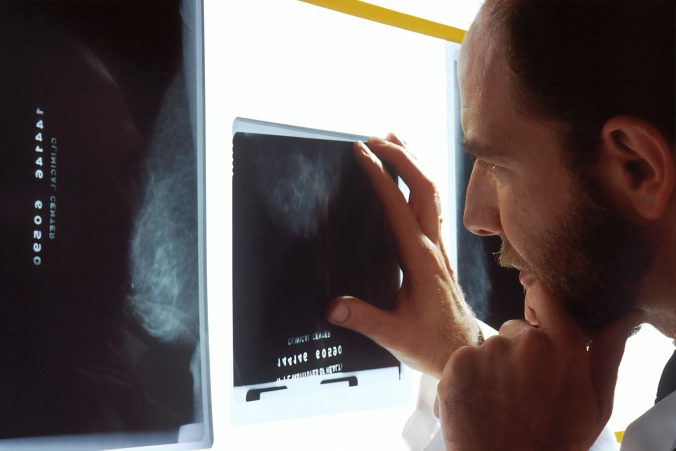The use of AI tools in healthcare has become a recurring theme on this blog. So far, the posts have mainly been about mobile and online apps for use by patients and the general public. Today, the theme is more advanced AI tools which are used professionally by healthcare staff.
Within the Swedish program for breast cancer screening, radiologists interpret large amounts of X-ray images to detect breast cancer at an early stage. The workload is great and most of the time the images show no signs of cancer or pre-cancers. Today, AI tools are being tested that could improve mammography in several ways. AI could be used as an assisting resource for the radiologists to detect additional tumors. It could also be used as an independent reader of images to relieve radiologists, as well as to support assessments of which patients should receive care more immediately.
For AI-assisted mammography to work, not only the technology needs to be developed. Researchers also need to investigate how women think about AI-assisted mammography. How do they perceive AI-assisted breast cancer screening? Four researchers, including Jennifer Viberg Johansson and Åsa Grauman at CRB, interviewed sixteen women who underwent mammography at a Swedish hospital where an AI tool was tested as a third reviewer of the X-ray images, along with the two radiologists.
Several of the interviewees emphasized that AI is only a tool: AI cannot replace the doctor because humans have abilities beyond image recognition, such as intuition, empathy and holistic thinking. Another finding was that some of the interviewees had a greater tolerance for human error than if the AI tool failed, which was considered unacceptable. Some argued that if the AI tool makes a mistake, the mistake will be repeated systematically, while human errors are occasional. Some believed that the responsibility when the technology fails lies with the humans and not with the technology.
Personally, I cannot help but speculate that the sharp distinction between human error, which is easier to reconcile with, and unacceptably failing technology, is connected to the fact that we can say of humans who fail: “After all, the radiologists surely did their best.” On the other hand, we hardly say about failing AI: “After all, the technology surely did its best.” Technology does not become subject to certain forms of conciliatory considerations.
The authors themselves emphasize that the participants in the study saw AI as a valuable tool in mammography, but held that the tool cannot replace humans in the process. The authors also emphasize that the interviewees preferred that the AI tool identify possible tumors with high sensitivity, even if this leads to many false positive results and thus to unnecessary worry and fear. In order for patients to understand AI-assisted healthcare, effective communication efforts are required, the authors conclude.
It is difficult to summarize the rich material from interview studies. For more results, read the study here: Women’s perceptions and attitudes towards the use of AI in mammography in Sweden: a qualitative interview study.

Written by…
Pär Segerdahl, Associate Professor at the Centre for Research Ethics & Bioethics and editor of the Ethics Blog.
Viberg Johansson J, Dembrower K, Strand F, et al. Women’s perceptions and attitudes towards the use of AI in mammography in Sweden: a qualitative interview study. BMJ Open 2024;14:e084014. doi: 10.1136/bmjopen-2024-084014
Approaching future issues



Recent Comments